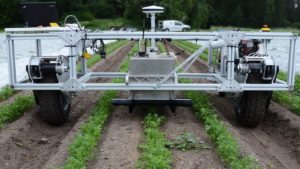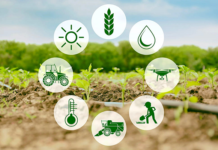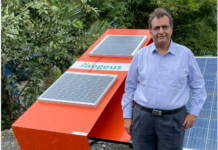
Exhausted of hearing news on farmer suicides, drought impacting agri output, pest attack leading to crop loss and many more news on anguish in Indian farming. Time is changing certainly, technological advancement in farming is ready to revolutionize Indian farming by 2020.
Yes, you’re reading it right – Sensors, Automation and Engineering are going to solve all the current problems and create opportunities in the untouched areas of Indian farming.
Cropping Sensors
Almost centuries Indian farmers follow a set of prescribed manual or guideless during fertilizer application and spraying. The local agri university or research agencies give farmers information on the dosage and method of application which is common to all farms and farmers.
The evolution of crop sensors is going to change this scenario. Sensors tomorrow are going to provide site-specific information on the exact amount of nutrient required for a farm. This will save a lot of fertilizers and also conserve the precious soil resources.
Farming Vertically
Skyscrapers in agriculture is going to be the future in increasing farm output per area. With depleting soil fertility levels and increasing urbanization, land for farming tomorrow is going to be costlier than before. This means that food is going to be costlier and not affordable to common people.
To avoid this situation, the vertically farming technique using soil-less medium and using artificial lights are the future. This technique will reduce cost, produce more, protect crops from bad weather and ultimately produce food which is safe and healthier.
Agri Robots
Soil preparation, weeding, inter-cultivation, fruit harvesting are soon going to be auto. The agri robots are going to replace the manual labors and will automate agricultural processes.
Robotic Swarms
Just imagine hundreds of agri robots embedded with sensors collecting real-time information on farms. The data collected are shared to cloud and automatic reports are generated in terms of excess moisture, nutrient deficiency and many more insights of the farm.
The robotic swarms are already on trial in Israel farms and are going to solve all untouched areas in farming. For instance, a global technical firm called FENDT is working on a project call MARS Mobile Agricultural Robot Swarms which is a Research in the field of agricultural robotics funded by the European Union.
Automatic Tractors
Self-driving tractors which are GPS enabled will help reducing human errors in farming which are very relevant today. In Indian context where more than 90% of the farms are small and scattered driving a tractor requires certain skillset. With increasing urbanization, the demand for tractor driver is extraordinary in rural India.
Self-driving tractors can solve this problem and farmers can navigate them remotely. All major tractor companies like New Holland, John Deere and Mahindra are investing in this technology. Who knows soon Indian farmers might be using remote controlled tractors in the farms.
Fitness trackers for cows
Fit bits have revolutionized human fitness, in the same path a start-up in India (StellApps) has introduced fit bits for cows. This technology used the IoT features in tracking a cow’s sleeping time, eating and lameness period in helping farmers to take informed decisions.
Big data in farming
Collection of huge chunks of farming data, interpretation of the data and taking real time decisions will enable faster growth in agriculture. Data analytics and informed decision making will ensure greater levels of consistency, reliability, and accuracy.
Information such as plant height and correlation with plant lifetime can provide insightful information in terms of an amount of care it needs to be taken to a particular farm.
Bringing the above technologies into middle-of-the-road adoption in Indian farms and making them affordable is the key to success. With the evolution of technology, research and rapid modernisation in farming, the above technologies can be expected to be mainstream in Indian context by 2020 and financially viable for farmers by 2022.


















